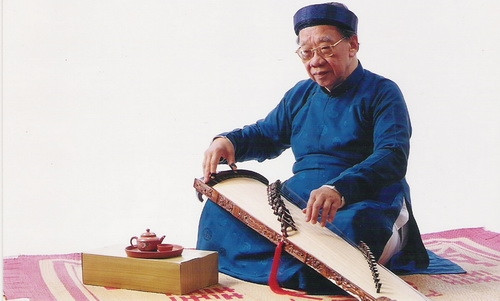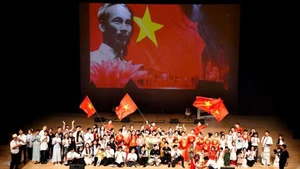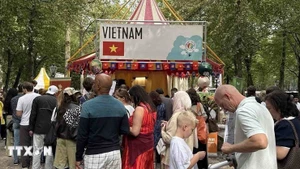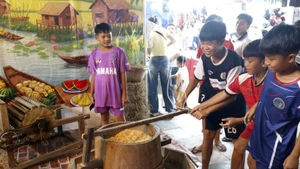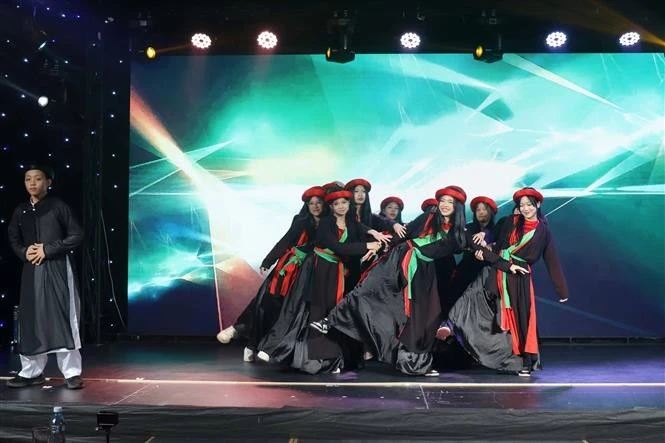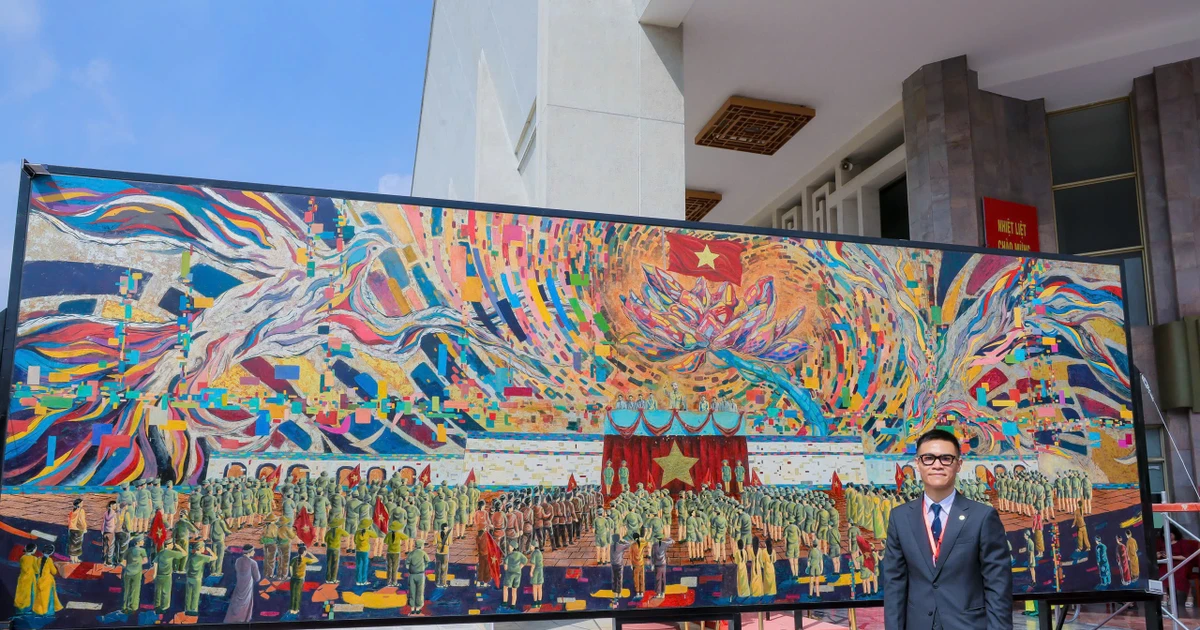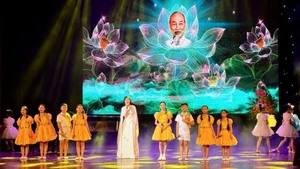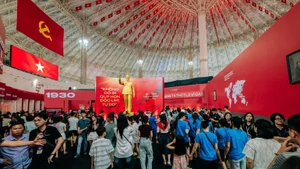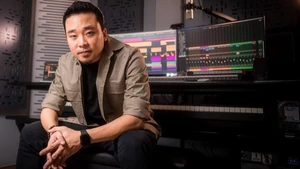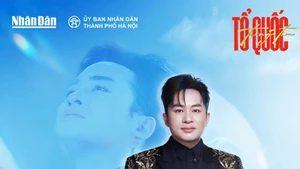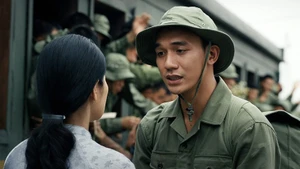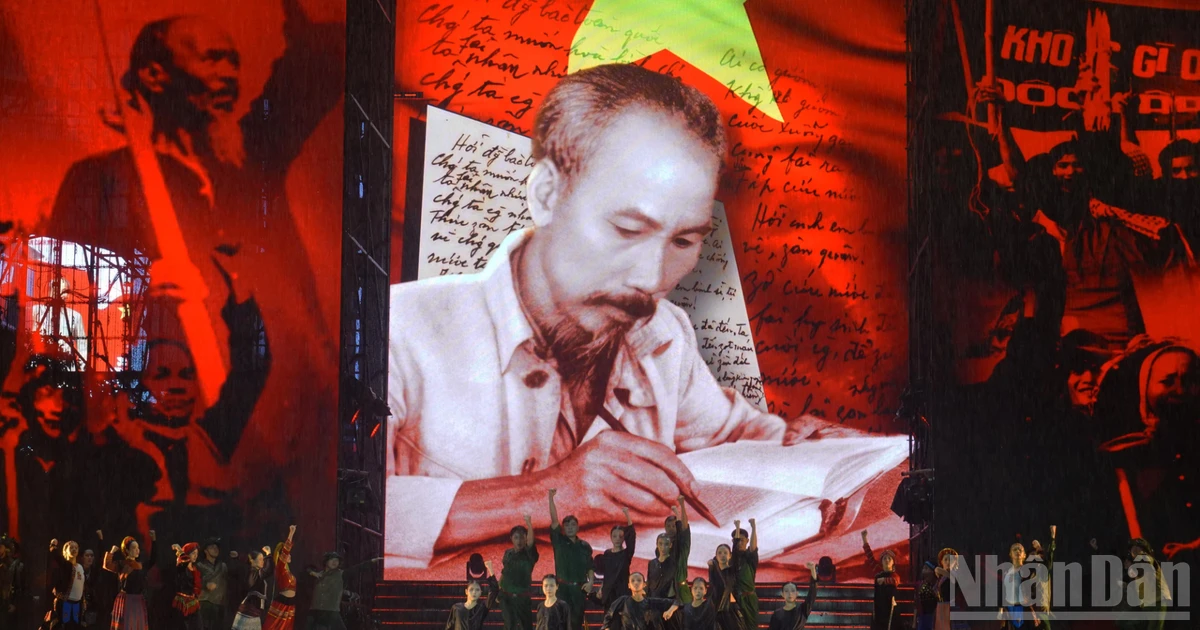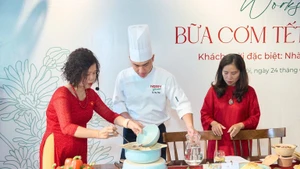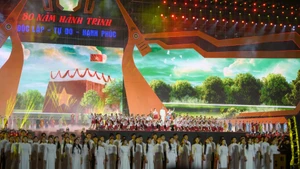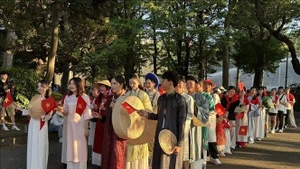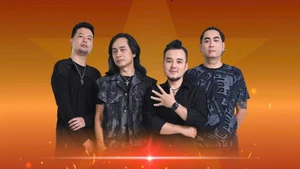>>> Don Ca Tai Tu receives UNESCO certificate
On the occasion, Professor Tran Van Khe, a senior researcher of Vietnamese culture and folk music, shared his thoughts on the recognition as well as his concerns about preservation of the art form.
Question: You formed a close attachment to Don Ca Tai Tu at a very early age, how did you come to know about the art form?
Professor Tran Van Khe: I have spent most of my life studying Don Ca Tai Tu and have watched closely its journey across the nation and now, to the outside.
Both my paternal and maternal families have roots in Vietnamese folk music, including Don Ca Tai Tu. Thus, even when I was inside my mother’s womb I heard Don Ca Tai Tu through the sound of my grandfather’s dan ty ba (four-chord lute) and my uncle’s flute.
Don Ca Tai Tu has brought many blessing to my life. The first award I ever won, I was studying abroad, was thanks to a Don Ca Tai Tu performance. My PhD thesis was also about Don Ca Tai Tu, which led to many invites to countries across the world to talk about Vietnam’s unique art form. Since 1952, most of my research has been focused on Don Ca Tai Tu and more generally on Vietnam’s folk music and Asian music.
Considering this rich history, why did you place Ca Tru (ceremonial singing) and Nha Nhac (Hue royal court music) before Doc Ca Tai Tu on the list of submissions to the UNESCO in 2009 when you worked as a consultant to the Vietnamese Government during the dossier compilation process?
I didn’t leave out Don Ca Tai Tu. At the time, Don Ca Tai Tu had not met enough UNESCO criteria to be honoured as an Intangible Cultural Heritage of Humankind. Very importantly, then for an art form to be recognised by the UNESCO it had to have been played for more than three centuries and Don Ca Tai Tu had only been played for roughly 100 years. Therefore, if we put Don Ca Tai Tu on the list, I knew for sure that it would be rejected.
When UNESCO changed its criteria for the accolade, I knew that it would be easier for the art form to be acknowledged.
Notably though, Don Ca Tai Tu received much attention from the UNESCO long before it was recognised. In 1963, I made a number of CDs of Don Ca Tai Tu and oriental music under the name of UNESCO, featuring the voice of late singer Bach Hue and folk instrumentalists Sau Tung, Tu Huyen and Chin Trich.
In 1972, Professor Vinh Bao and I went to France to make a record of Don Ca Tai Tu for Radio France. The record was then sold well and received enthusiastic appreciation from public.
The UNESCO once sent an expert to my house to record Don Ca Tai Tu performances professor Bao and I. It can be said that there is no other art form in Vietnam, which has received such attention.
Therefore, while compiling the Don Ca Tai Tu dossier, we added all this evidence into the file demonstrating the art forms’ already recognised worth.
I was not surprised when I was told about the UNESCO’s approval of Don Ca Tai Tu. The recognition, in my opinion, will facilitate the country’s culture and tourism development.
What is your greatest concern now that Don Ca Tai Tu has received UNESCO’s acknowledgement?
I am afraid that Don Ca Tai Tu is being led away from its roots. Don Ca Tai Tu, actually, is purely an improvisational art form undertaken by amateur singers and instrumentalists without any arrangement beforehand.
However, it is now performed in clubs in which participants are well-dressed, playing in way which requires great rehearsal; every note is pitched perfect. Thus, their performances are over staged, lacking ‘soul’ and ‘sprit’.
What should we do to preserve Don Ca Tai Tu?
We should pay respect to Don Ca Tai Tu artisans and create favourable conditions so that they can improve their living standards.
We should introduce the youth to the true version of Don Ca Tai Tu so that they are exposed to the original spirit of the art form
I also think that Don Ca Tai Tu clubs should work to bring Don Ca Tai Tu back to the right performance space, in which participants are free to interact with each other.
Thank you so much for the interview!
| Don Ca Tai Tu, an indispensable part of the cultural heritage of Vietnam’s southerners, emerged at the end of the 19th century as a mixture of ceremonial singing, Nha Nhac (Hue royal court music) and folk music. A Don Ca Tai Tu orchestra is often made up of a group of young people, who are friends or neighbours getting together after work to practice. Amateur singers are usually accompanied by string and percussion instruments, including dan co (two stringed fiddle), dan tranh (16 string zither) and dan bau (monochord). The genre is improvisational with the musicians playing with basic tunes, learnt by heart, varying the ‘skeletal melody’ and rhythmic patterns of the pieces. In 2012, the genre was recognised in the MoCST list of National Intangible Cultural Heritage. |
